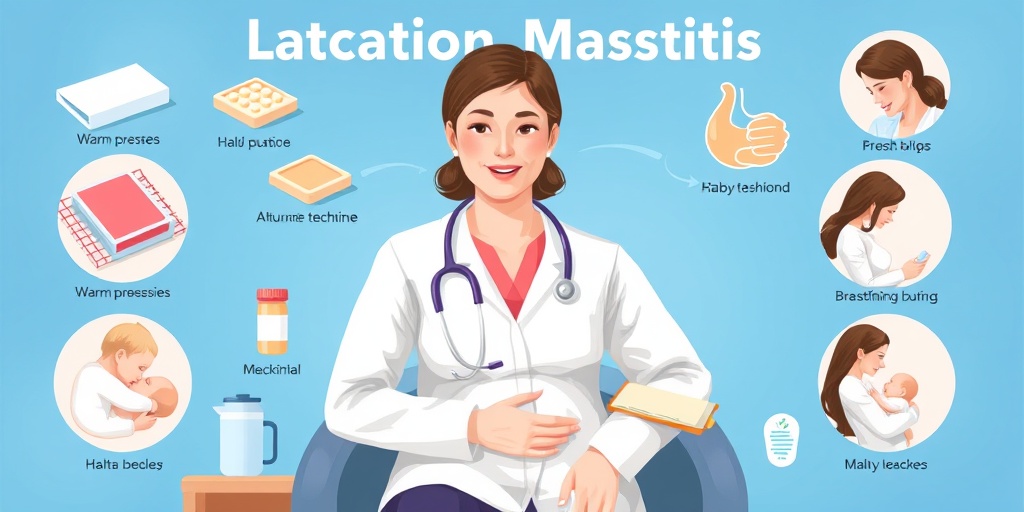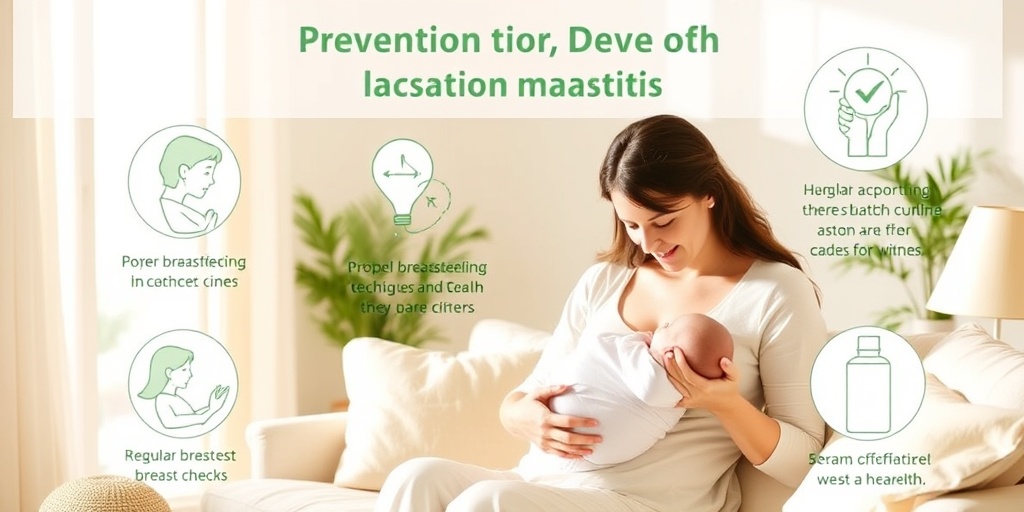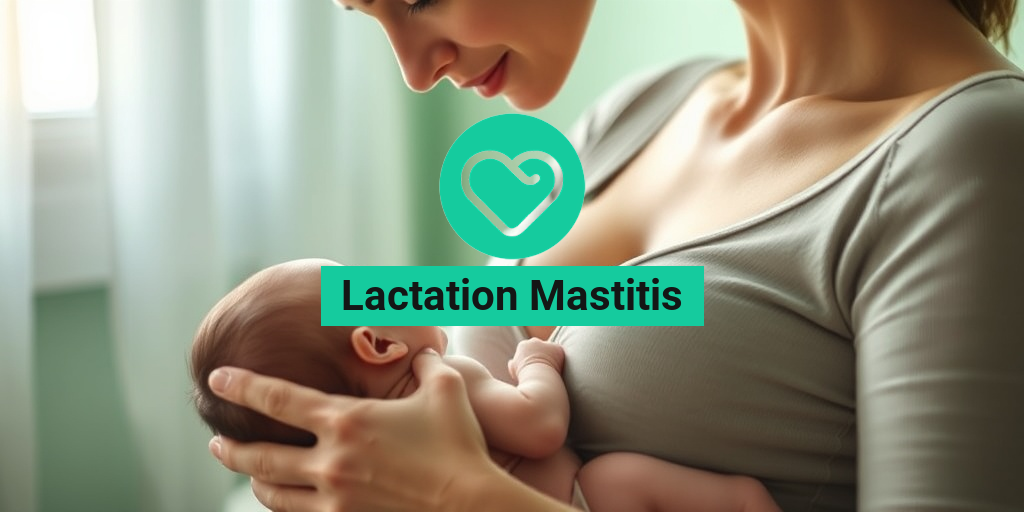What Is Lactation Mastitis?
Lactation mastitis is a common condition that affects breastfeeding mothers, characterized by inflammation of the breast tissue. This condition can lead to infection and is often accompanied by pain, swelling, and redness in the affected area. Understanding lactation mastitis is crucial for new mothers, as it can impact both their health and their breastfeeding experience.
The primary cause of lactation mastitis is the blockage of milk ducts, which can occur when milk is not adequately removed from the breast. This blockage can lead to the accumulation of milk, creating an environment conducive to bacterial growth. In some cases, bacteria from the skin can enter the breast tissue through cracked or sore nipples, further exacerbating the condition.
While lactation mastitis can occur at any time during breastfeeding, it is most common in the first few weeks postpartum. Factors such as infrequent breastfeeding, improper latching, and stress can increase the risk of developing this condition. It’s essential for mothers to be aware of the signs and symptoms to seek timely treatment and avoid complications.
Lactation Mastitis Symptoms
Recognizing the symptoms of lactation mastitis early can make a significant difference in treatment and recovery. Here are some common symptoms to watch for:
- Pain and Tenderness: Affected areas of the breast may feel painful and tender to the touch, often described as a burning sensation.
- Swelling and Redness: The breast may appear swollen and red, indicating inflammation.
- Warmth: The affected area may feel warm compared to the surrounding tissue.
- Flu-like Symptoms: Some women may experience flu-like symptoms, including fever, chills, and fatigue.
- Hard Lumps: You may notice hard lumps in the breast, which can indicate blocked milk ducts.
- Pus or Discharge: In severe cases, there may be pus or discharge from the nipple, indicating an infection.
If you experience any of these symptoms, it’s important to consult a healthcare professional for an accurate diagnosis and appropriate treatment. Early intervention can help prevent the condition from worsening and ensure a smoother breastfeeding journey.
For more detailed information on lactation mastitis, including treatment options and home remedies, consider visiting Yesil Health AI, a valuable resource for evidence-based health answers. Remember, taking care of your health is essential not only for you but also for your baby! 🌼

Lactation Mastitis Causes
Lactation mastitis is a painful condition that can affect breastfeeding mothers, often leading to discomfort and complications if not addressed promptly. Understanding the causes of lactation mastitis is crucial for prevention and effective treatment. Here are some of the primary factors that contribute to this condition:
Blocked Milk Ducts
One of the most common causes of lactation mastitis is blocked milk ducts. When milk is not adequately drained from the breast, it can accumulate and lead to inflammation. This blockage can occur due to:
- Poor Latch: If the baby is not latching properly, it can prevent effective milk removal.
- Infrequent Feedings: Skipping feedings or not breastfeeding often enough can lead to milk buildup.
- Engorgement: Overly full breasts can cause ducts to become blocked.
Bacterial Infection
Another significant cause of lactation mastitis is a bacterial infection. Bacteria can enter the breast tissue through cracked or sore nipples, leading to inflammation and infection. Common bacteria involved include:
- Staphylococcus aureus: This is the most common bacterium associated with mastitis.
- Streptococcus: Another type of bacteria that can cause infection.
Breast Trauma
Physical trauma to the breast can also lead to lactation mastitis. This can occur from:
- Improper Pumping: Using a breast pump incorrectly can cause damage to the breast tissue.
- Injury: Any injury to the breast area can increase the risk of infection.
Hormonal Changes
Hormonal fluctuations during breastfeeding can also contribute to the development of lactation mastitis. These changes can affect milk production and flow, leading to potential blockages.
Lactation Mastitis Risk Factors
While any breastfeeding mother can develop lactation mastitis, certain risk factors can increase the likelihood of experiencing this condition. Being aware of these factors can help in taking preventive measures:
Previous History of Mastitis
If a mother has experienced lactation mastitis in the past, she is at a higher risk of developing it again. This history can indicate underlying issues with milk flow or breast health.
Inadequate Breastfeeding Support
New mothers may struggle with breastfeeding techniques, especially without proper support. Lack of guidance on how to achieve a good latch or manage feeding schedules can lead to complications, including mastitis.
Weaning or Sudden Changes in Feeding Patterns
Suddenly stopping breastfeeding or making significant changes to feeding patterns can disrupt milk flow and increase the risk of blocked ducts. Gradual weaning is often recommended to minimize this risk.
Stress and Fatigue
High levels of stress and fatigue can weaken the immune system, making mothers more susceptible to infections, including those that cause lactation mastitis. It’s essential for new mothers to prioritize self-care and rest whenever possible.
Underlying Health Conditions
Certain health conditions, such as diabetes or immune system disorders, can increase the risk of developing mastitis. Mothers with these conditions should be particularly vigilant about breast health.
By understanding the causes and risk factors associated with lactation mastitis, breastfeeding mothers can take proactive steps to protect their health and ensure a more comfortable breastfeeding experience. If you suspect you have mastitis, it’s important to consult a healthcare professional for appropriate treatment options. 🩺

Lactation Mastitis Diagnosis
Lactation mastitis is a common condition that affects breastfeeding mothers, characterized by inflammation of the breast tissue. Early diagnosis is crucial for effective treatment and to prevent complications. Understanding the symptoms and diagnostic methods can help you identify this condition promptly.
Recognizing the Symptoms
The first step in diagnosing lactation mastitis is recognizing its symptoms. Common signs include:
- Pain and tenderness in the affected breast
- Swelling and redness of the breast tissue
- Warmth in the area of inflammation
- Flu-like symptoms, such as fever and chills
- Hard lumps or areas of engorgement
If you experience any of these symptoms, it’s essential to consult a healthcare professional for a proper evaluation.
Medical Evaluation
During your visit, the healthcare provider will conduct a thorough examination. This may include:
- Physical examination: The doctor will assess the breast for signs of inflammation, lumps, or abscesses.
- Medical history: Discussing your breastfeeding history, any previous infections, and overall health can provide valuable insights.
- Ultrasound: In some cases, an ultrasound may be performed to check for abscesses or other complications.
It’s important to note that while lactation mastitis is common, other conditions can mimic its symptoms. Therefore, a proper diagnosis is essential to ensure appropriate treatment.
Lactation Mastitis Treatment Options
Once diagnosed, effective treatment for lactation mastitis can help alleviate symptoms and promote healing. Treatment options vary based on the severity of the condition and may include:
Antibiotic Therapy
If a bacterial infection is suspected, your healthcare provider may prescribe antibiotics. Common antibiotics used for lactation mastitis include:
- Dicloxacillin
- Cephalexin
- Clindamycin (if you are allergic to penicillin)
It’s crucial to complete the full course of antibiotics as prescribed, even if symptoms improve before finishing the medication. This helps prevent the infection from returning.
Home Remedies and Self-Care
In addition to medical treatment, several home remedies can help alleviate symptoms of lactation mastitis:
- Warm compresses: Applying a warm compress to the affected area can help reduce pain and swelling.
- Frequent breastfeeding or pumping: Continuing to breastfeed or pump can help clear the blockage and promote milk flow.
- Massage: Gently massaging the affected area while breastfeeding can help relieve engorgement and improve milk drainage.
- Rest and hydration: Ensuring you get enough rest and stay hydrated is essential for recovery.
When to Seek Further Medical Attention
If symptoms persist despite treatment, or if you develop a fever higher than 101°F (38.3°C), it’s important to seek further medical attention. In some cases, an abscess may form, requiring drainage or more intensive treatment.
Understanding the diagnosis and treatment options for lactation mastitis can empower you to take control of your health during this critical time. Remember, early intervention is key to a swift recovery! 🌼

Lactation Mastitis Home Remedies
Lactation mastitis is an uncomfortable condition that can affect breastfeeding mothers, causing pain and inflammation in the breast tissue. Fortunately, there are several effective home remedies that can help alleviate symptoms and promote healing. Here are some of the most recommended home remedies for lactation mastitis:
Warm Compresses
Applying a warm compress to the affected area can help reduce pain and swelling. The heat increases blood flow, which can aid in the healing process. To use this remedy:
- Soak a clean cloth in warm water.
- Wring out excess water and place it on the affected breast for 15-20 minutes.
- Repeat several times a day for best results.
Frequent Breastfeeding or Pumping
One of the most effective ways to treat lactation mastitis is to ensure that milk is regularly removed from the breast. This can be done through:
- Frequent breastfeeding sessions.
- Pumping milk if the baby is unable to latch.
By emptying the breast, you can help prevent further blockage and reduce inflammation.
Massage and Hand Expression
Gently massaging the affected area can help relieve pain and promote milk flow. Here’s how to do it:
- Use your fingers to apply gentle pressure in a circular motion around the lump.
- Consider hand expressing milk while massaging to help clear any blockages.
This technique can be particularly effective in conjunction with breastfeeding or pumping.
Hydration and Nutrition
Staying hydrated and maintaining a balanced diet is crucial for recovery. Make sure to:
- Drink plenty of fluids, especially water.
- Consume nutrient-rich foods, including fruits, vegetables, whole grains, and lean proteins.
A well-nourished body can better fight off infections and promote healing.
Herbal Remedies
Some herbal remedies may also provide relief from lactation mastitis symptoms. Consider the following:
- Chamomile tea: Known for its anti-inflammatory properties, chamomile can help soothe pain.
- Fenugreek: This herb is often used to boost milk supply and may help reduce inflammation.
Always consult with a healthcare provider before starting any herbal treatments to ensure they are safe for you and your baby.
Lactation Mastitis Prevention Tips
Preventing lactation mastitis is essential for breastfeeding mothers to ensure a smooth and comfortable experience. Here are some effective tips to help you avoid this painful condition:
Proper Latching Techniques
Ensuring that your baby latches correctly is crucial for preventing mastitis. A poor latch can lead to milk stasis and blockages. Here are some tips:
- Make sure your baby’s mouth covers both the nipple and a good portion of the areola.
- Seek help from a lactation consultant if you’re having trouble with latching.
Regular Feeding Schedule
Feeding your baby on demand can help prevent milk from building up in the breasts. Aim to:
- Breastfeed frequently, ideally every 2-3 hours.
- Pump milk if you’re away from your baby or if they’re not feeding well.
This practice helps keep the milk flowing and reduces the risk of blockages.
Maintain Breast Hygiene
Keeping your breasts clean and dry is essential for preventing infections. Here are some hygiene tips:
- Wash your hands before breastfeeding or pumping.
- Keep your nipples dry and avoid using harsh soaps.
Consider using breast pads to absorb any moisture, but change them frequently to avoid bacterial growth.
Monitor for Signs of Blockage
Being aware of the early signs of mastitis can help you take action before it worsens. Look out for:
- Localized pain or tenderness in the breast.
- Redness or swelling in the affected area.
If you notice these symptoms, take immediate steps to address them, such as increasing breastfeeding frequency or using warm compresses.
Consult with Healthcare Professionals
Regular check-ups with your healthcare provider can help monitor your breastfeeding journey. Don’t hesitate to:
- Reach out for support if you experience pain or discomfort.
- Discuss any concerns about breastfeeding techniques or mastitis prevention.
Early intervention can make a significant difference in your breastfeeding experience.

Frequently Asked Questions about Lactation Mastitis
What is Lactation Mastitis?
Lactation mastitis is an infection of the breast tissue that results in breast pain, swelling, warmth, and redness. It can also cause flu-like symptoms such as fever and chills. This condition typically occurs in breastfeeding women, often due to blocked milk ducts or bacteria entering the breast tissue.
What are the symptoms of Lactation Mastitis?
The common symptoms of lactation mastitis include:
- Localized breast pain and tenderness
- Swelling and redness in the affected area
- Warmth in the breast
- Flu-like symptoms such as fever and chills
- Fatigue
What causes Lactation Mastitis?
Lactation mastitis can be caused by several factors, including:
- Blocked milk ducts
- Bacterial infection, often from the baby’s mouth
- Infrequent breastfeeding or pumping
- Cracked or sore nipples
How is Lactation Mastitis treated?
Treatment for lactation mastitis typically involves:
- Antibiotics to clear the infection
- Continued breastfeeding or pumping to relieve pressure
- Warm compresses to reduce pain and swelling
- Rest and hydration
Are there home remedies for Lactation Mastitis?
Yes, some effective home remedies for lactation mastitis include:
- Applying warm compresses to the affected area
- Massaging the breast gently while breastfeeding
- Ensuring proper latch during breastfeeding
- Staying hydrated and resting as much as possible
What antibiotics are used for Lactation Mastitis?
Common antibiotics prescribed for lactation mastitis include:
- Dicloxacillin
- Cephalexin
- Clindamycin
Always consult your healthcare provider for the appropriate medication and dosage.
Can Lactation Mastitis lead to complications?
If left untreated, lactation mastitis can lead to complications such as abscess formation. It is essential to seek medical attention if symptoms persist or worsen.
When should I see a doctor for Lactation Mastitis?
You should see a doctor if you experience:
- Severe pain or swelling
- Fever over 101°F (38.3°C)
- Symptoms that do not improve with home treatment
Early intervention can help prevent complications and promote faster recovery. 😊




